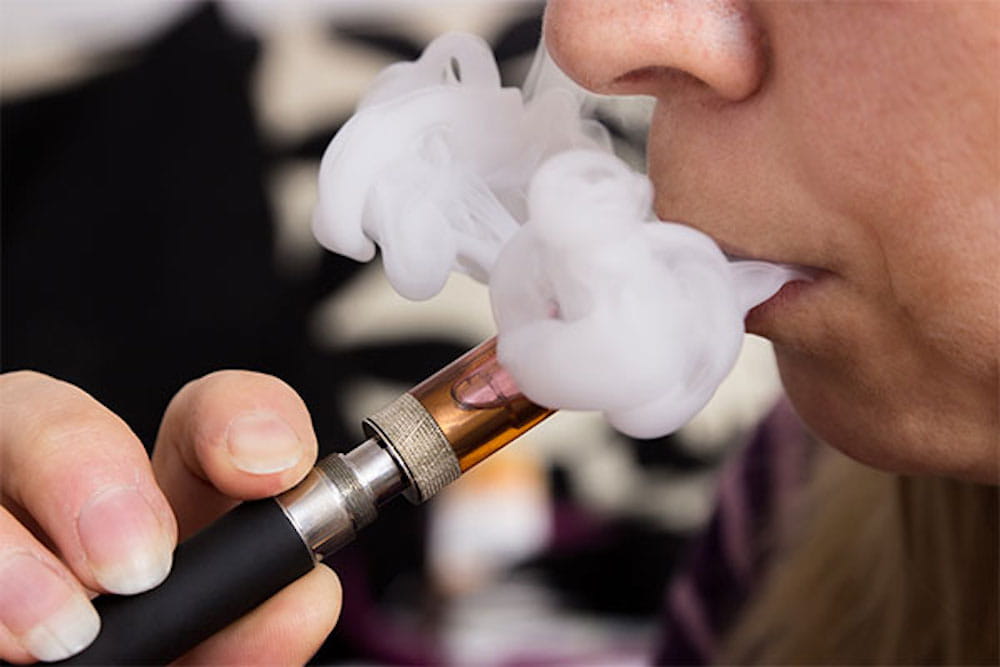Essential Scientific Insights About Vaping

Millions of people worldwide have adopted vaping as an alternative to traditional cigarette smoking. Many smokers believe that using e-cigarettes can help reduce their nicotine addiction.
However, the health effects and implications of vaping are not yet fully understood. There is limited data on the long-term impact of vaping, and more research is needed to determine whether e-cigarettes can effectively reduce nicotine cravings and have a lesser impact on the body.
Vaping, the act of inhaling vapor produced by an electronic cigarette or similar device, has gained significant popularity over the past decade. Initially marketed as a safer alternative to smoking traditional tobacco products, vaping has become a topic of considerable debate within the scientific community.
Despite these uncertainties, several scientific facts about vaping have emerged, shedding light on its effects and dispelling common myths. Here are some essential scientific insights about vaping that you should know.
Vaping Is Less Harmful Than Smoking, but It Still Carries Risks
Tobacco use in any form is detrimental to health. A particularly common method of tobacco consumption is smoking.
Smoking products like cigarettes and cigars contain tobacco, which delivers nicotine swiftly to the brain when smoked. This rapid delivery fosters a dependence on nicotine, which releases adrenaline and creates a temporary feeling of excitement, making it challenging to quit.
However, nicotine is not the only harmful component in tobacco products.
The smoke from burning these products contains thousands of chemicals, including hydrogen cyanide, formaldehyde, lead, arsenic, ammonia, and radioactive substances. Prolonged exposure to these toxic chemicals can lead to serious health issues such as heart disease, lung disease, and other severe conditions, ultimately increasing the risk of death.


As a perceived safer alternative, many smokers have switched to vaping, which does not involve burning tobacco. Instead, vaping uses a battery-powered electronic cigarette to heat a liquid, turning it into an aerosol that users inhale, mimicking the act of smoking. A popular Canadian brand, STLTH, is known for its affordable and innovative disposable vapes.
While vaping eliminates the harmful effects of smoke from burning tobacco, it is not without risks. The aerosol from e-cigarettes still contains nicotine, along with flavorings and other potentially harmful chemicals.
In October 2021, research by Johns Hopkins University revealed that many vaping liquids might contain harmful substances, including pesticides, previously undetected chemicals, and flavorings associated with respiratory irritation and possible toxic effects. Thousands of unidentified chemicals were also discovered in e-liquids.
The Centers for Disease Control and Prevention (CDC) has also reported an increase in cases of EVALI (e-cigarette or vaping use-associated lung injury), with several deaths linked to this condition. Those affected by EVALI often used modified vaping devices or black-market e-liquids, particularly those containing Tetrahydrocannabinol (THC). Consequently, the CDC advises against using THC-containing vaping products, devices from informal sources, and heavily modified substances.
E-Cigarettes Are Equally Addictive as Conventional Cigarettes
When comparing vapes to cigars and other smoking products, many people examine their composition, how they function, and which is more addictive.
The tobacco plant, a key ingredient in traditional smoking products like cigars and cigarettes, contains nicotine. Nicotine is a toxic substance that can increase blood pressure, spike adrenaline, and boost dopamine levels. Regular consumption of nicotine can elevate heart rate and the risk of heart attacks.
Tobacco cigarettes and similar products deliver nicotine to the brain quickly, wiring it to crave more and encouraging the smoker to buy and use more cigars or cigarettes.
Electronic cigarettes do not contain tobacco, but most vaping liquids on the market today are infused with nicotine.
Even disposable vapes, which cannot be refilled, often contain nicotine. When a person inhales aerosol from an e-cigarette, they can absorb this chemical through the blood vessels in the lungs within about 10 seconds.
Besides the rapid transport of nicotine, the portability and convenience of vapes make them just as addictive as traditional cigarettes and cigars. Since they are easy to carry and only need to be charged or refilled (for refillable models), users often find themselves vaping more frequently, leading to higher nicotine use and dependence.
Vaping Juices Contain Various Chemicals
Although vaping doesn’t involve burning tobacco like traditional smoking products, e-liquids still contain ingredients that can be harmful to health, particularly for regular vapers. Vaporization of these liquids can release additional chemicals, posing further health risks.


Common ingredients in vaping juices include nicotine, glycerin, propylene glycol, and flavorings. Nicotine affects the heart and respiratory system and is the addictive component in vaping. While other base ingredients might not be harmful when ingested, they can become hazardous when heated and vaporized.
A 2018 study by Nicotine & Tobacco Research found that interactions between flavorings and propylene glycol could expose vapers to health risks similar to those associated with traditional cigarettes.
Additionally, other chemicals present in vaping juices, even without combustion, can produce compounds upon vaporization that gradually damage the respiratory system when inhaled. These harmful chemicals include diacetyl, acetaldehyde, formaldehyde, acrolein, lead, and cadmium.
Safely Managing Vaping Liquids Demands Careful Attention
Most vaping liquids are typically housed in small bottles or containers, commonly made from materials such as plastic or glass. These products come in a wide variety of flavors, nicotine concentrations, and volumes.
Despite their variations, it is crucial to handle all vaping liquids with care to prevent potential accidents. Improper handling and storage can lead to accidental ingestion or absorption through the skin, posing risks especially to children and pets. Ingestion of these chemicals can result in severe health issues such as seizures, respiratory failure, coma, or even death.
To ensure safe handling of e-liquids, it’s important to store them away from direct sunlight and heat sources, as exposure to light and heat can degrade nicotine and flavor components, compromising their quality and safety. Storing them in a cool, dark place like a cupboard is recommended.
Additionally, vaping juices should be stored out of reach of children and pets, given their potential toxicity if ingested even in small amounts. Keeping them in a secure box or locked cupboard can prevent accidental access.
When transferring e-liquids to other containers, it’s advisable to use containers that are clearly labeled and equipped with child-resistant caps to minimize the risk of unintended exposure. However, it’s generally safest to keep e-liquids in their original bottles or containers, designed to be leak-proof and secure.
Ensuring Safety When Using Lithium-Ion Batteries in Vaping Devices
Vaping devices, powered by rechargeable lithium-ion batteries, rely on adequate charge to function. These batteries can be recharged over months or even years, depending on their capacity and usage patterns.
However, incidents involving e-cigarettes and their batteries have been reported, leading to injuries such as severe burns, cuts, and fractures.
To prevent such injuries, it’s crucial to handle lithium-ion batteries with care:
- Avoid Overnight Charging: Never leave your vape charging overnight or unattended. Overcharging increases the risk of battery overheating, potential explosion, and fire.
- Use Manufacturer-Approved Chargers: Always charge your device with the charger provided by the manufacturer. Using incompatible chargers (e.g., phone or tablet chargers) can damage the e-cigarette and pose safety hazards.
- Charge on a Safe Surface: Place your vape on a clean, flat surface while charging, away from flammable materials. Avoid placing it on soft surfaces like sofas or beds, which can trap heat and increase the risk of overheating.
- Keep Away from Direct Sunlight: Charging your device in direct sunlight can lead to overheating. Ensure the charging area is well-ventilated and shielded from direct sunlight.
- Monitor Battery Performance: If you notice your vape requires more frequent charging, or if it becomes unusually hot, leaks, or delivers weaker hits, consider replacing the device. These signs may indicate battery degradation.
- Dispose Properly: When disposing of your vape, follow proper e-waste disposal guidelines to prevent environmental harm from lithium-ion batteries.
By following these safety tips, you can minimize the risk of accidents and injuries associated with lithium-ion batteries in vaping devices. Prioritizing proper charging practices and maintenance contributes to safer vaping experiences.
Understanding the Basics of Vaping Devices
Vaping devices operate without the need for a lighter to deliver nicotine to users. Instead, they utilize various components to vaporize the e-liquid stored in cartridges and release aerosols. These devices offer a variety of flavors and nicotine strengths in their vaping juices.
When activated by either a button press or inhalation, the atomizer and its coils initiate vaporization. The atomizer converts the e-liquid into vapor, with the coils within the atomizer responsible for heating the liquid. Regular replacement of these coils is necessary to ensure consistent vapor quality.
For the entire process to function, the vape relies on a rechargeable battery that must be sufficiently charged. Charging times typically range from one to two hours for a full charge. Understanding the best long-lasting disposable vapes currently available in the market can enhance the vaping experience.
Common Inquiries About Vaping
- What Are Some Scientific Facts About Vaping? Vaping is considered less harmful than smoking because it lacks tobacco smoke, which contains harmful substances like carbon monoxide and tar. However, it still poses risks due to the formation of compounds when e-liquids are vaporized. Additionally, most vaping juices contain nicotine, which maintains addiction levels similar to smoking.
- What Chemicals Are Found in Vape Juices? Vape juices contain chemicals designed to impart flavor. Nicotine is a key ingredient contributing to the addictive nature of vaping. E-liquids also include glycerin, propylene glycol, and other additives, which can produce harmful substances when heated and inhaled as aerosols.
- Is There Scientific Evidence That Vaping Is Harmful? While research on vaping is not as extensive as that on smoking, numerous studies suggest potential long-term harm. Chemicals in vape juices, when aerosolized, pose risks such as respiratory and cardiovascular diseases. Secondhand exposure to vape aerosols can also be harmful, containing nicotine and fine particles that can enter the respiratory system.
Summary
With the increasing global use of vaping devices among youth, young adults, and adult smokers, medical experts are actively investigating the scientific realities of vaping.
As research progresses, new insights emerge. Contrary to some beliefs, vaping can perpetuate nicotine addiction due to the high nicotine content in e-liquids, rather than curbing dependence on nicotine. Additionally, chemicals present in vaping liquids can pose health risks when heated and inhaled.
Nicotine pouches offer an alternative to vaping by avoiding the release of vape aerosols and associated volatile organic compounds.
Beyond concerns about aerosols, mishandling of e-liquids and batteries in vaping devices can also present health hazards. Proper storage of e-liquids and safe charging practices for vaping devices are essential to prevent accidents and potential injuries.


